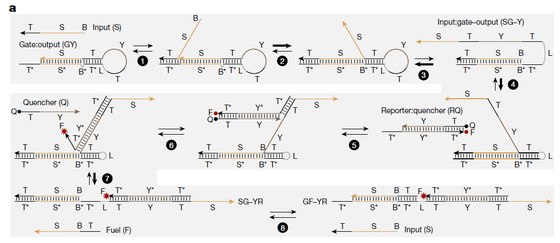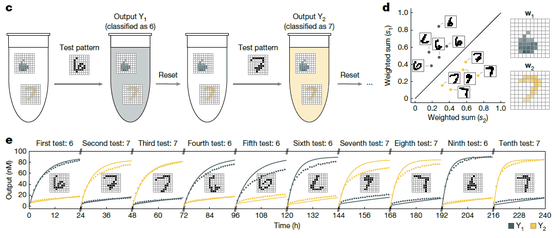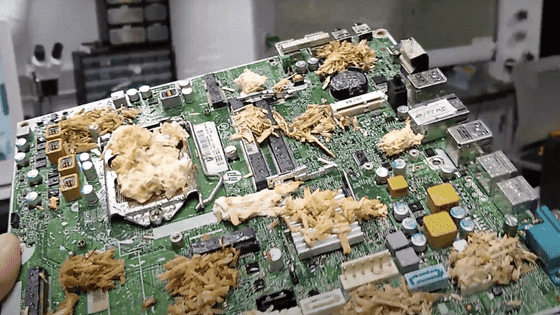A technology to keep DNA computers running using heat is announced

A DNA computer is an ultra-compact computing system that uses the chemical properties of DNA instead of silicon chips to perform calculations and store information. DNA can store information for long periods of time without energy, but finding a stable power source to perform calculations has long been a challenge. A research team at the California Institute of Technology has developed a new method to solve this problem: a technology that uses heat.
Heat-rechargeable computation in DNA logic circuits and neural networks | Nature
DNA circuits store data — with heat as their power source
https://www.nature.com/articles/d41586-025-03202-5
DNA computers operate using a fundamentally different mechanism from the computers we normally use. While conventional computers perform calculations by turning electricity on and off across a silicon chip, DNA computers use the chemical properties of DNA molecules. Programs and data are DNA strands with specific base sequences, and the 'computation' is a chain of chemical reactions in which these strands combine and separate as designed in a test tube.
The advantages of DNA computers are their incredible information storage density and energy-saving performance. DNA is an extremely small molecule, yet it can store vast amounts of information, and it is said that this information can be stored stably for millions of years with almost no energy consumption. However, in order to keep this DNA computer running stably for long periods of time, a 'universal energy source' similar to adenosine triphosphate (ATP) in living organisms was required.

A research team at the California Institute of Technology has reported that they have developed a groundbreaking technology that allows DNA computers to be repeatedly 'charged' with heat, enabling complex molecular circuits that were previously disposable to operate stably for long periods of time.
This technology involves designing specific DNA strands into a folded structure called a 'hairpin,' creating a state of stored energy called a 'dynamic trap.' When another DNA strand is added from the outside as an 'input,' this hairpin structure unwinds and the calculation is performed. After the calculation is completed, the circuit is heated to around 95°C, and all the DNA bonds are released, returning to a single-stranded state.
When the system is then cooled, the DNA strands quickly return to their original hairpin structure, rather than their most energetically stable state. This 'charges' the circuit back to a high-energy state where it can perform computations. This heating and cooling cycle takes just a few minutes, and unlike chemical fuels, it doesn't produce harmful waste products, so it can be used repeatedly without any loss of performance.

Furthermore, to demonstrate the effectiveness of this technology, the research team used a DNA computer to build a DNA neural network with 100-bit input and conducted an experiment to correctly classify the handwritten digits '6' and '7'.
In this experiment, different handwritten digit patterns were input 10 times in a row, and each time, the system was thermally reset and recharged. As a result, the system maintained its performance and continued to correctly classify digits stably over the 10 rounds. The research team argues that 'these experimental results demonstrate that this technology can be applied not only to simple circuits but also to large-scale, complex systems involving more than 200 types of molecules.'

However, there is a problem with repeatedly exposing DNA to high temperatures for resetting, as this can degrade the DNA itself. Experiments have shown that after 100 resets, computational performance clearly declines, especially if the heating time is long. The research team predicts that the upper limit for the number of resets would be around 1,000 if the device is heated for one minute. Furthermore, designs aimed at increasing computational speed tended to decrease the success rate of resets. Therefore, the researchers argued that researchers will need to select the optimal design by balancing speed and reusability.
Natalio Klass Gall, a biocomputing engineer at Newcastle University, said of the research, 'The technique developed by the Caltech research team is really clever because it can be reset simply by changing the temperature. It's so simple, like an on/off switch, it's amazing.' Meanwhile, Ross King, who studies DNA computing at the University of Cambridge, commented, 'It's interesting that heat is the energy source for DNA computers, but we could do the same thing better by using molecules like ATP.'
Related Posts:
in Free Member, Science, Posted by log1i_yk







